- Understanding cucumber bush fruiting process
- Male and female flowers
- Pollination
- Fruit development
- Conclusion
- Importance of proper pollination
- The role of bees in cucumber pollination
- How to improve pollination in cucumber bushes
- Providing optimal growing conditions
- Correct watering technique
- Using fertilizers to promote fruiting
- 1. Choose the right type of fertilizer
- 2. Apply the fertilizer at the right time
- 3. Apply the fertilizer evenly
- 4. Monitor and adjust fertilizer application
- 5. Consider organic fertilizers
- Pruning and training cucumber plants
- Pruning
- Training
- Controlling pests and diseases
- 1. Regular monitoring and inspection
- 2. Integrated pest management
- 3. Disease-resistant varieties
- 4. Crop rotation
- Harvesting and maintaining fruiting productivity
- Harvesting:
- Maintaining fruiting productivity:
- “Question-Answer”
- Why aren’t my cucumber bushes producing any fruit?
- What can I do to encourage my cucumber bushes to produce more fruit?
- How often should I water my cucumber plants?
- What type of fertilizer should I use for my cucumber plants?
- How can I prevent pests and diseases from affecting my cucumber plants?
- “Video” How? When? Why? Prune Cucumbers High Yields Maximum Production Small Spaces… Simple and Easy
Growing cucumbers can be a rewarding experience for any gardener. The crisp and refreshing fruit is not only delicious, but also extremely versatile in the kitchen. However, sometimes cucumber bushes may fail to produce fruit, leaving gardeners frustrated and disappointed. Fortunately, there are two essential actions that can stimulate cucumber bushes to fruit, ensuring a successful harvest.
Proper pollination is crucial for cucumber plants to produce fruit. Cucumbers are insect-pollinated, and the transfer of pollen from the male flower to the female flower is essential for fruit development. To ensure successful pollination, it is important to attract bees and other pollinators to your garden. Planting pollinator-friendly flowers such as marigolds, sunflowers, and zinnias nearby can help attract these vital insects. Additionally, avoiding the use of pesticides that may harm bees is also important.
Providing the optimal growing conditions for your cucumber plants is another key to stimulating fruit production. Cucumbers require full sun exposure, at least six to eight hours of direct sunlight per day. They also prefer well-draining soil that is rich in organic matter. Regular watering is crucial for cucumber plants, especially during dry periods. Keeping the soil consistently moist, but not waterlogged, will help the plants thrive and encourage fruit development.
By taking these two essential actions, gardeners can greatly increase the chances of their cucumber bushes producing a bountiful harvest. Proper pollination and optimal growing conditions are key factors in stimulating fruit production. With a little bit of effort and care, you can enjoy a plentiful supply of delicious cucumbers all summer long!
Understanding cucumber bush fruiting process
Growing cucumber bushes can be a rewarding activity, but it’s important to understand the fruiting process in order to stimulate your plants to produce a bountiful harvest. Cucumber plants have both male and female flowers, and successful pollination is crucial for fruit development.
Male and female flowers
Cucumber plants produce separate male and female flowers. Male flowers are typically the first to appear, and they play a vital role in pollination. These flowers have a long, slender stem with pollen-producing stamens at the center. Female flowers, on the other hand, have a small, swollen base known as an ovary, which will turn into a cucumber fruit if pollination is successful.
It’s important to note that not all flowers on a cucumber plant will develop into fruits. Male flowers often outnumber female flowers, and it is normal for some female flowers to drop before fruiting. This is a natural part of the plant’s reproductive process and shouldn’t be a cause for concern.
Pollination
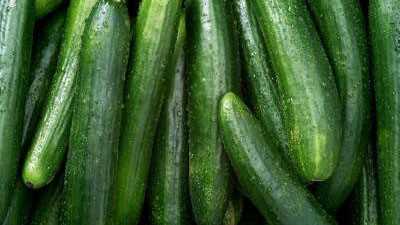
Pollination is the transfer of pollen from the male flowers to the female flowers, which is essential for fruit development. In the case of cucumbers, pollination primarily occurs through the action of insects like bees and butterflies. These insects collect pollen from the male flowers and transfer it to the female flowers as they move from plant to plant.
While insects are the preferred pollinators for cucumbers, you can also hand-pollinate the flowers to ensure successful fruit set. To hand-pollinate, simply remove a male flower from the plant and gently rub its stamen onto the center of a female flower. This mimics the natural pollination process and increases the chances of fruit development.
Fruit development
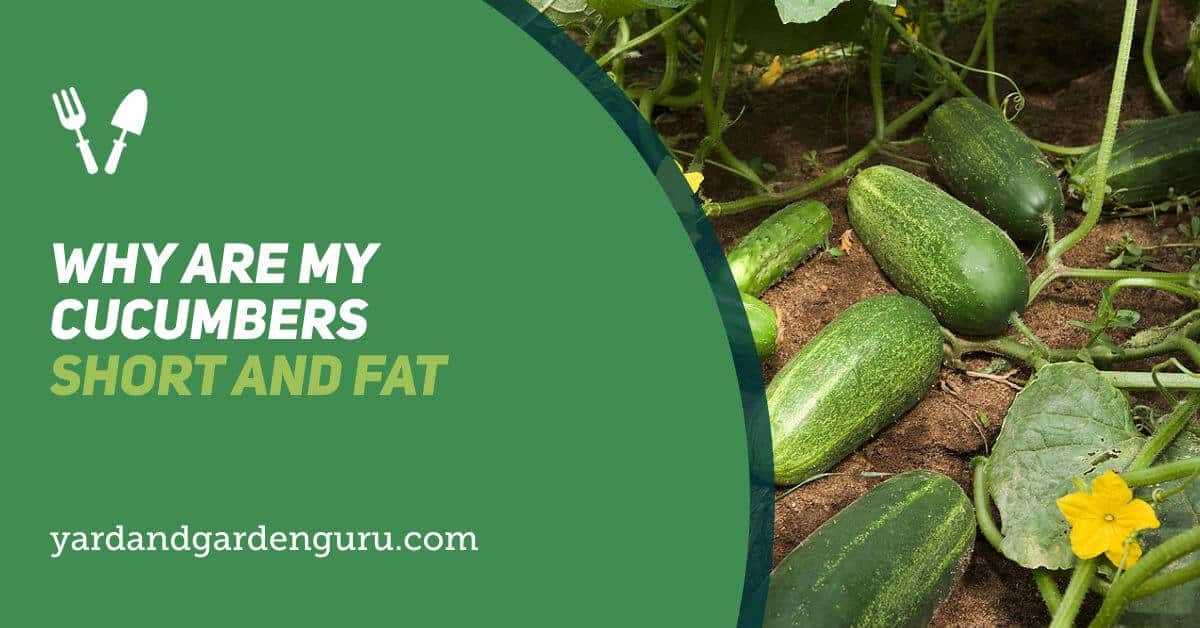
Once pollination has occurred, the cucumber fruit will start to develop. The ovary at the base of the female flower will enlarge, and the fruit will grow in size over time. It’s important to provide adequate water, nutrients, and sunlight to support fruit development.
Cucumbers are ready for harvest when they reach the desired size and color. It’s best to harvest cucumbers regularly to encourage further fruit production.
Conclusion
Understanding the cucumber bush fruiting process is key to stimulating your plants to produce a plentiful harvest. By ensuring successful pollination and providing the necessary care for fruit development, you can enjoy a bountiful supply of cucumbers from your garden.
Importance of proper pollination
Pollination is a vital process in the growth and development of cucumber bushes. It is the transfer of pollen from the male flowers (stamens) to the female flowers (pistils) that leads to the successful fertilization of the ovaries and the formation of fruits. Proper pollination is essential for a high yield of cucumbers and their overall quality.
Adequate pollination ensures that each female flower is properly fertilized, resulting in the production of healthy and well-shaped fruits. It also helps in maximizing the number of fruiting sites and ensuring uniform growth and development across the cucumber bushes.
In cucumber plants, pollination primarily occurs through the activities of bees and other pollinators. These insects transfer pollen from the male flowers to the female flowers as they visit them for nectar or pollen. Therefore, providing a conducive environment for pollinators is crucial for effective pollination.
The role of bees in cucumber pollination
Bees play a vital role in cucumber pollination. They are attracted to the bright yellow color of the male flowers and are naturally inclined to visit them for their rich nectar. As they move from one flower to another, they inadvertently carry pollen grains on their bodies, thereby pollinating the female flowers.
It is important to create an inviting environment for bees in the vicinity of cucumber bushes to enhance their pollination. Planting a variety of flowering plants that bloom at different times throughout the growing season can attract and support a healthy population of bees. Providing a clean water source nearby can also help in attracting bees.
How to improve pollination in cucumber bushes
Here are some steps you can take to promote proper pollination in your cucumber bushes:
- Plant a variety of flowering plants to attract pollinators like bees.
- Ensure the presence of male and female flowers in the cucumber bushes.
- Minimize the use of pesticides and insecticides that can harm pollinators.
- Provide a clean water source for pollinators.
- Consider hand-pollination as an option if pollinators are scarce or absent.
By following these steps, you can enhance the pollination process in your cucumber bushes and increase the yield and quality of your cucumbers.
Providing optimal growing conditions
- Temperature: Cucumber plants thrive in warm temperatures, ideally between 75-85°F (24-29°C). Providing a heated greenhouse or using a cloche can help maintain the optimum temperature for the plants.
- Light: Cucumber bushes require plenty of sunlight to grow and fruit. Choose a location that receives at least 6-8 hours of direct sunlight per day. If growing indoors, use artificial grow lights to supplement the natural light.
- Soil: Cucumbers prefer well-draining soil that is rich in organic matter. Prepare the planting area by incorporating compost or well-rotted manure. A slightly acidic soil with a pH level of 6.0-7.0 is ideal for cucumber growth.
- Watering: Cucumber plants have high water requirements, especially during fruiting. Keep the soil consistently moist but not waterlogged. Water deeply at the root level, preferably in the morning, to reduce the risk of fungal diseases.
- Fertilizer: To promote healthy growth and fruiting, apply a balanced fertilizer or compost tea every 2-3 weeks. Avoid over-fertilizing, as this can lead to excessive foliage growth and fewer fruits.
- Pruning: Regularly prune the cucumber plants to improve air circulation and prevent overcrowding. Remove any yellowing or diseased leaves, as well as any lateral shoots that may divert energy from fruit production.
- Trellising: Training cucumber bushes on trellises or cages helps save space, improves air circulation, and keeps the fruits off the ground, reducing the risk of rot or disease. Use soft ties or twine to gently secure the vines to the supports.
Correct watering technique
Watering is a crucial aspect of stimulating cucumber bushes to bear fruit. It is important to master the correct watering technique to ensure the health and productivity of your plants.
Here are some essential tips for watering cucumber bushes:
- Consistent watering: Cucumber plants require regular and consistent watering. The soil should never be allowed to dry out completely, as this can cause stress to the plants and hinder fruit production. Water the plants deeply and thoroughly, making sure the soil is evenly moist at all times.
- Time of day: Water your cucumber bushes in the morning or late afternoon. Avoid watering during the hottest part of the day when the sun is at its peak, as this can lead to excessive evaporation, and the plants may not be able to absorb the moisture effectively.
- Water at the base: When watering cucumber bushes, it is best to focus the water directly at the base of the plants. This helps to prevent fungal diseases and ensures that the water reaches the roots where it is needed the most.
- Avoid overhead watering: Cucumber plants are susceptible to fungal diseases, and overhead watering can promote their development. Instead, use a watering can or a drip irrigation system to deliver water directly to the soil.
- Monitoring soil moisture: Regularly check the moisture level of the soil by inserting your finger into the top inch. If it feels dry, it’s time to water. On the other hand, if it feels moist, hold off on watering to prevent overwatering and root rot.
- Mulching: Apply a layer of organic mulch around the cucumber bushes to help retain moisture in the soil. This will reduce the frequency of watering and keep the plants hydrated for longer.
By following these watering tips, you can ensure that your cucumber bushes receive the right amount of moisture they need to thrive and produce a bountiful harvest.
Using fertilizers to promote fruiting
One of the essential actions to stimulate cucumber bushes to fruit is proper fertilization. By providing the right nutrients, you can encourage healthy growth and maximize fruit production. Here are some tips on using fertilizers to promote fruiting in cucumber plants:
1. Choose the right type of fertilizer
When selecting a fertilizer for your cucumber bushes, look for one that is specifically formulated for fruiting plants. These fertilizers usually have a higher potassium content, which is important for fruit development. Additionally, they may contain other essential nutrients like nitrogen and phosphorus.
2. Apply the fertilizer at the right time
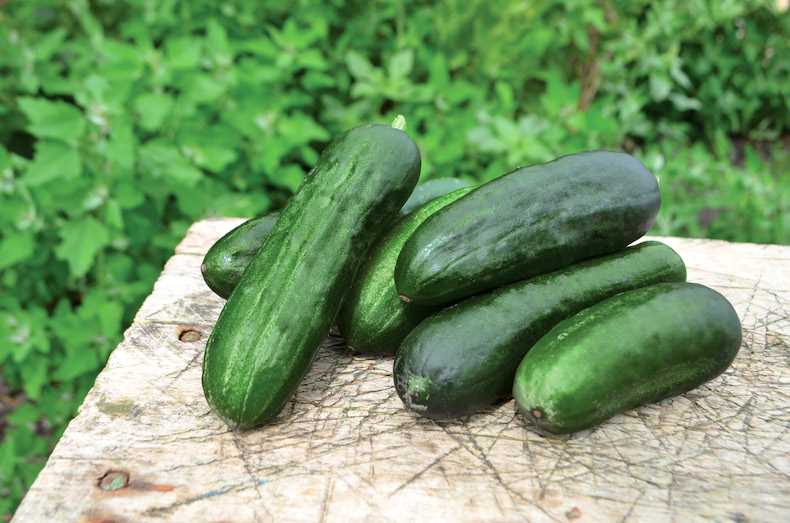
Timing is crucial when it comes to fertilizing cucumber bushes for fruiting. It is best to apply the fertilizer before the plants start flowering. This will ensure that the nutrients are available when the plants need them the most. Follow the instructions on the fertilizer packaging for the recommended application rate.
3. Apply the fertilizer evenly
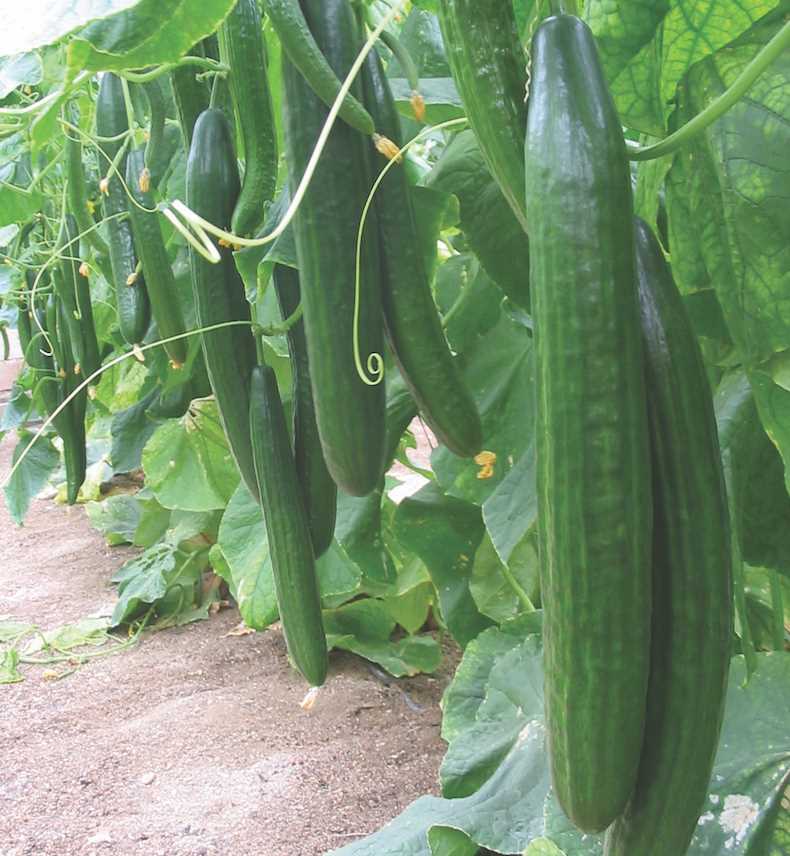
To promote even growth and fruiting, distribute the fertilizer evenly around the base of each plant. Avoid applying the fertilizer too close to the stem, as this can cause burning or damage to the plant. After spreading the fertilizer, lightly water the plants to help the nutrients penetrate the soil.
4. Monitor and adjust fertilizer application
Keep an eye on the health and growth of your cucumber bushes throughout the growing season. If you notice any deficiencies or excesses in nutrient levels, adjust your fertilizer application accordingly. It is important to strike a balance and avoid over-fertilization, which can lead to negative effects on plant health.
5. Consider organic fertilizers
If you prefer to use organic methods, there are several options available for fertilizing cucumber bushes. Compost or well-rotted manure can be applied as a natural fertilizer to supply essential nutrients. You can also make organic fertilizer teas from ingredients like seaweed or fish emulsion to provide a nutrient boost to the plants.
Fertilization plays a crucial role in promoting the fruiting of cucumber bushes. By choosing the right fertilizer, applying it at the right time and in the right manner, you can ensure healthy growth and a bountiful harvest of delicious cucumbers.
Pruning and training cucumber plants
Pruning and training cucumber plants are essential practices that can help stimulate fruiting and maximize the yield of your cucumber bushes. By removing excess foliage and training the vines to grow in a specific direction, you can create a more efficient and productive cucumber plant.
Pruning
Pruning involves removing unnecessary foliage and side shoots from the cucumber plant. This helps increase air circulation and sunlight penetration, reducing the risk of diseases and providing better conditions for fruit development. Here are some key points to keep in mind when pruning cucumber plants:
- Start pruning when the plants have reached a height of about 12-18 inches and have started to develop several leaves.
- Remove any damaged or diseased leaves, as well as any yellow or wilted foliage.
- Pinch off the side shoots that emerge from the leaf axils, as they can divert energy and nutrients away from fruit production.
- Leave at least two or three leaves above each developing fruit, as these leaves provide energy to the fruit and help protect it from sunburn.
- Regularly remove any new growth that appears on the main stem, as this can also divert energy from fruit development.
Training
Training involves guiding the cucumber vines to grow in a specific direction, usually by using stakes, trellises, or cages. This helps to optimize space utilization, increase air circulation, and make it easier to harvest and monitor the developing fruits. Here are some tips for training cucumber plants:
- Place stakes or trellises in the soil before planting the cucumber seeds or seedlings.
- As the vines grow, gently guide them towards the stakes or trellises, using garden twine or plant ties if necessary.
- Regularly check the vines and gently redirect them if they start to grow in unwanted directions.
- Be careful not to break or damage the vines while training them. Handle them delicately to avoid interrupting the flow of nutrients.
- Consider using different training methods, such as vertical trellises or A-frame structures, depending on the available space and your personal preferences.
By incorporating pruning and training into your cucumber plant care routine, you can encourage healthy growth and increase the likelihood of a bountiful cucumber harvest.
Controlling pests and diseases
Pests and diseases can pose a significant threat to cucumber bushes and hinder their fruiting. It is important to implement measures to control and prevent these issues. Here are some essential actions to keep pests and diseases at bay:
1. Regular monitoring and inspection
Regularly inspect your cucumber bushes for any signs of pests or diseases. Check the leaves, stems, and fruits for any abnormalities, such as discoloration, spots, or distorted growth. Early detection is crucial in preventing the spread of pests and diseases.
2. Integrated pest management
Implement an integrated pest management system to control pests effectively. This approach involves using a combination of techniques, such as cultural, biological, and chemical control methods. Here are a few strategies you can use:
- Cultural control: Practice good sanitation by removing any fallen leaves, fruits, or debris from around the plants. This will reduce the breeding grounds for pests and diseases.
- Biological control: Introduce beneficial insects, such as ladybugs or lacewings, that feed on common cucumber pests like aphids or mites. These natural predators can help keep the pest population in check.
- Chemical control: As a last resort, you can use pesticides to control severe infestations. Choose pesticides that are specifically formulated for cucumbers and follow the instructions carefully to avoid damage to the plants and the environment. Organic and natural alternatives are also available.
3. Disease-resistant varieties
Plant disease-resistant cucumber varieties whenever possible. These varieties are bred to withstand common diseases and are less susceptible to infection. Check with your local gardening center or seed supplier for disease-resistant cucumber options.
4. Crop rotation
Practice crop rotation by avoiding planting cucumbers in the same location year after year. This practice helps reduce the build-up of pests and diseases in the soil, as different crops have different pest and disease vulnerabilities.
By implementing these actions, you can effectively control and prevent pest and disease issues in your cucumber bushes, promoting healthy growth and maximizing fruit production.
Harvesting and maintaining fruiting productivity
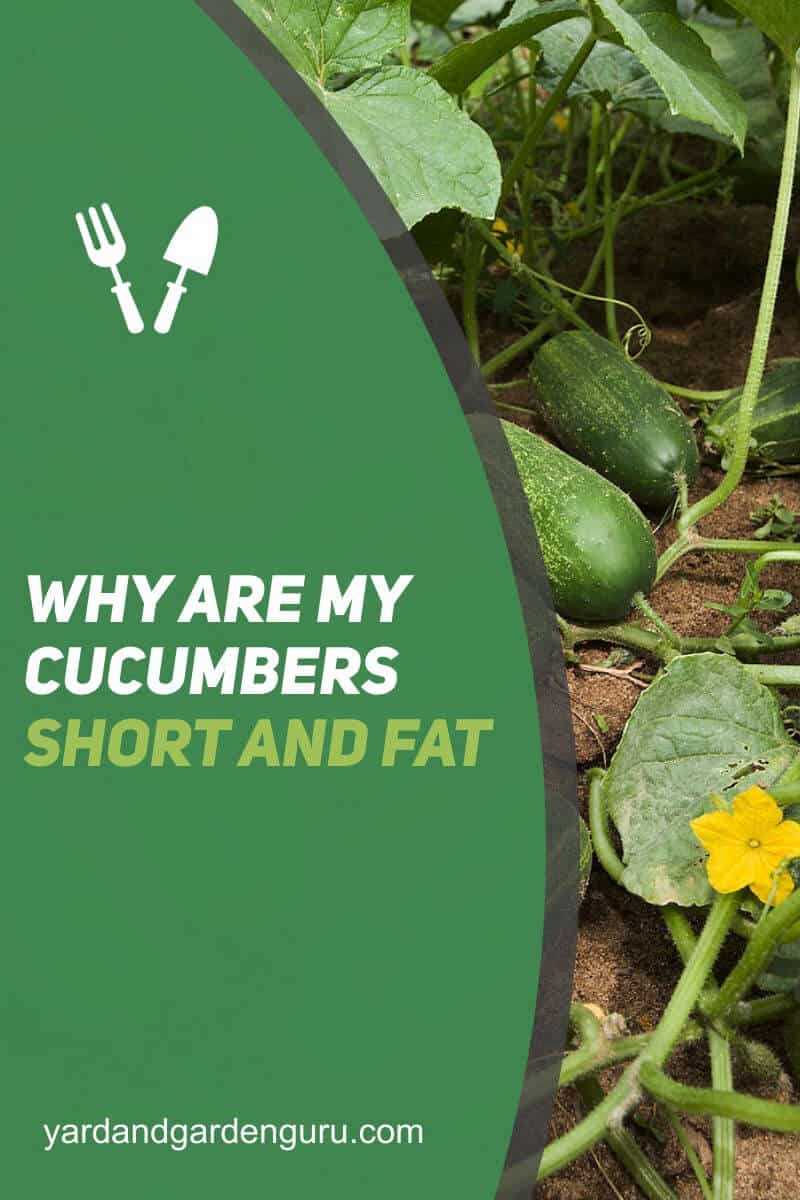
To ensure a bountiful cucumber harvest and maintain the productivity of the cucumber bushes, it is important to follow proper harvesting and maintenance practices. Here are some essential actions you can take:
Harvesting:
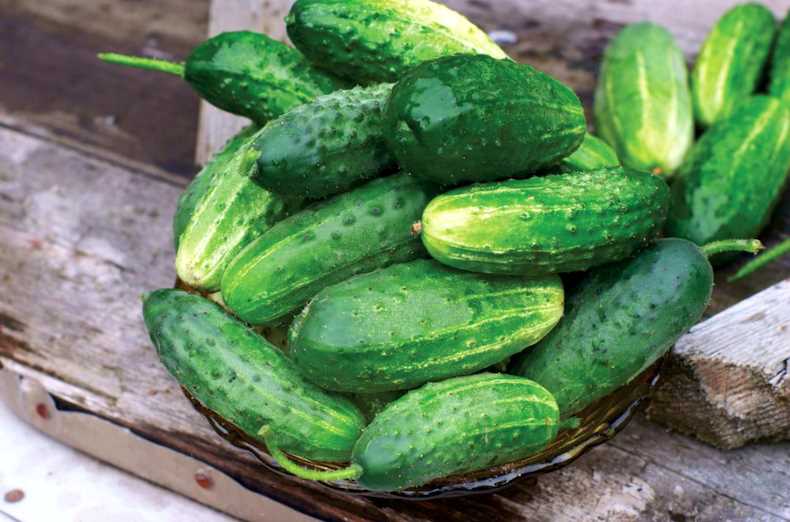
- Pick cucumbers when they reach the desired size and color. The size and color may vary depending on the cucumber variety.
- Gently twist or cut the cucumber off the vine to avoid damaging the plant.
- Harvest cucumbers regularly to stimulate the plant to produce more fruit. Leaving overripe cucumbers on the vine can signal the plant to stop producing.
Maintaining fruiting productivity:
- Regularly inspect the cucumber plants for pest infestations or diseases. Take appropriate actions to control and treat any issues.
- Ensure the cucumber plants receive adequate water and sunlight. Cucumbers are a water-intensive crop, so ensure they are properly watered, especially during hot and dry periods.
- Apply a balanced fertilizer to the cucumber plants according to the recommended dosage and schedule. This will provide the necessary nutrients for healthy plant growth and fruit development.
- Prune excessive foliage to improve air circulation and reduce the risk of diseases. This will also redirect the plant’s energy towards fruit production.
- Support the cucumber plants with trellises or stakes to keep the vines off the ground. This helps prevent diseases and makes harvesting easier.
- Remove any weeds that compete with the cucumber plants for nutrients and water.
By following these harvesting and maintenance practices, you can ensure the health and productivity of your cucumber bushes, resulting in a successful and fruitful harvest. Remember to adjust these practices based on your specific growing conditions and cucumber variety.
“Question-Answer”
Why aren’t my cucumber bushes producing any fruit?
There could be several reasons why your cucumber bushes aren’t producing any fruit. One possibility is that the plants aren’t getting enough sunlight, as cucumbers require at least 6-8 hours of direct sunlight per day. Another reason could be that the plants aren’t being properly pollinated, as cucumbers rely on insects like bees for pollination. Inadequate watering or improper fertilization can also affect fruit production. It’s important to ensure that the soil is consistently moist, but not waterlogged, and that the plants are receiving a balanced fertilizer. Additionally, certain pests or diseases can inhibit fruit production, so it’s important to monitor your plants for any signs of infestation or infection.
What can I do to encourage my cucumber bushes to produce more fruit?
There are two essential actions you can take to stimulate cucumber bushes to fruit. First, make sure your plants are receiving enough sunlight. Cucumbers require at least 6-8 hours of direct sunlight per day, so if they’re not getting enough, consider moving them to a sunnier location or providing artificial lighting. Second, ensure that your plants are properly pollinated. Cucumbers rely on insects like bees for pollination, so you can attract them to your garden by planting flowers or using insect-friendly pesticides. You can also manually pollinate the flowers by gently transferring pollen from the male flowers to the female flowers using a small brush or cotton swab.
How often should I water my cucumber plants?
Cucumbers require consistent moisture, so it’s important to water them regularly. The frequency of watering will depend on several factors, including the climate, soil type, and stage of growth. In general, aim to keep the soil evenly moist, but not waterlogged. As a guideline, water your cucumber plants deeply once or twice a week, providing enough water to thoroughly saturate the root zone. Monitor the soil moisture levels regularly and adjust your watering schedule as needed. It’s also a good idea to mulch around the plants to help retain soil moisture.
What type of fertilizer should I use for my cucumber plants?
Cucumber plants benefit from a balanced fertilizer that provides a good mix of essential nutrients. Look for a fertilizer with an NPK ratio of around 10-10-10 or 14-14-14. This means it contains equal proportions of nitrogen (N), phosphorus (P), and potassium (K). Nitrogen promotes leafy growth, phosphorus promotes flower and fruit development, and potassium helps with overall plant health and disease resistance. It’s important to follow the package instructions for application rates and timing. You can also consider using organic fertilizers, such as compost or well-rotted manure, to provide nutrients to your plants.
How can I prevent pests and diseases from affecting my cucumber plants?
Preventing pests and diseases is an important aspect of ensuring healthy cucumber plants and good fruit production. To minimize the risk of infestation or infection, practice good garden hygiene by removing and disposing of any infected plants or plant debris. Keep the garden clean and free from weeds, which can harbor pests. Monitor your plants regularly for any signs of pests or diseases, such as yellowing leaves, holes in the leaves, or wilting. Consider using organic pest control methods, such as insecticidal soap or neem oil, to manage common pests like aphids or cucumber beetles. Additionally, providing proper air circulation and spacing between plants can help prevent the spread of diseases.







